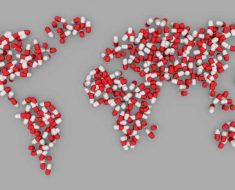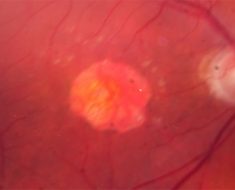In a recent review published in the journal Cell, researchers discussed advancements in ribonucleic acid (RNA)-comprising lipid nanoparticle (LNP)-based immunotherapies for cancer and the improvements required for next-generation vaccines.
Immunological therapy is a critical component of cancer treatment. However, despite the success of immunotherapeutics for various types of cancer, only a few cancer patients have shown responses to current immune-based therapies (such as monoclonal antibodies, recombinant proteinaceous molecules, small biological molecules, and cellular therapies). Moreover, the therapies may have adverse effects, warranting the development of novel approaches to improve combat against cancer. RNA LNPs are immune-stimulatory tools that could be developed to reduce the global cancer burden.
In the present review, researchers presented intramuscular messenger RNA (mRNA) lipid nanoparticle (LNP) vaccines as probable candidates for therapeutic cancer vaccines.
 Commentary: Delivering the next generation of cancer immunotherapies with RNA. Image Credit: Kateryna Kon / Shutterstock
Commentary: Delivering the next generation of cancer immunotherapies with RNA. Image Credit: Kateryna Kon / Shutterstock
RNA lipid nanoparticles as modular tools that can be engineered for tuning immune responses
New ribonucleic acid constructs that can amplify the expression of RNA [such as self-amplifying ribonucleic acid (saRNA) and circular RNA], alter translation [including small interfering ribonucleic acid (siRNA) and micro-ribonucleic acid (miRNA)], and perform genomic editing [including single guide ribonucleic acid (sgRNA) and CRISPR-associated protein-9 (Cas9) mRNA] hold immense promise to develop next-generation immunotherapy. Targeted vehicles for delivery, such as LNPs, could improve the potency and reduce the side effects of cancer vaccines.
An RNA lipid nanoparticle comprises (i) cationic or ionizable lipids interacting with polyanionic-type RNA to improve delivery; (ii) cholesterol for adjusting the fluidity of the lipid-bilayer; (iii) polyethylene glycol (PEG) lipid molecules to improve particle stability, lengthen LNP circulation and half-life; and (iv) ‘helper’ lipids, including phospholipids. The lipids and RNA form nanoparticles sized 80.0 to 100.0 nm to prevent degradation of the enclosed RNA and transport RNA to the target cell cytoplasm for expression in vivo. RNA molecules could be capsulated in lipid nanoparticles.
Further, single-stranded messenger ribonucleic acid can code for tumor vaccine neoantigens, whereas double-stranded small interfering RNA can encode knockdown checkpoint inhibitors to tune immune responses by RNA-induced activation of suppressed immune cells. Circular-type RNA can increase the duration of expression, benefiting in vivo chimeric antigen receptor (CAR) generation and vaccine antigens. Deep learning can be applied to sequenced and in vitro transcribed data obtained from tumor biopsy specimens to estimate distinctive tumor neoantigens that are coded in messenger ribonucleic acid.
The simultaneous delivery of antigens encoding cytokine-associated mRNAs, e.g., Tri-Mix [encoding caTLR4, the cluster of differentiation 40L (CD40L), and CD70], can improve dendritic cell (DC)-mediated presentation of tumor antigens. Lipid structures, parameters for lipid nanoparticle formulation, PEG lipid molecules, and antibody conjugates (anti-CD3, CD4, CD5, and CD8) could be engineered to enhance LNP cell specificity in vivo. The targeted LNP delivery in vivo would be critical for generating macrophages and CAR-T lymphocytes, in vivo.
The inherent modularity of mRNA-LNP vaccines enables cost-effective and rapid clinical translation of tailored, neoantigen-encoding vaccines compared to prior high-cost cell-based vaccines. Neoantigens can be obtained from tumor mutations specific to patients that induce immune responses. The capability of transcribing mRNA encoding specific neoantigens in vitro, using sequenced datasets with no ex vivo cellular culturing and protein molecule engineering requirements, makes the mRNA LNP platform especially beneficial for administering neoantigen-based vaccines. Additionally, multiple neoantigens could be coded by one mRNA protein only, enhancing vaccine potency and breadth.
Improving mRNA vaccines for next-generation immunotherapy
To develop effective next-generation vaccines based on mRNA technology, increasing cancer vaccine candidates, and improving RNA-LNP potency and tolerability, are required. Further research must be conducted to improve our understanding of cancers, and antigens with a broader tumor range must be designed. Additional tools based on deep learning and neural networks are required to improve the design of tumor neoantigens based on large and high-quality tumor antigen datasets.
To improve the potency of RNA LNPs, the formulations must comprise ionizable lipids. In addition, mRNA vaccines can be targeted to lymphoid antigen-presenting cells (APCs), which can cross-present major histocompatibility complex-I (MHC-I) proteins and activate cytotoxic (CD8) T lymphocytes to increase the potency of cancer vaccines.
Further, conjugating ligands to lipid nanoparticle surfaces (including DEC205 and anti-CD11c antibodies) may enhance the targeting of antigen-presenting cells. To improve cancer vaccine tolerability, biological mechanisms regulating reactogenicity must be understood, including those associated with interleukin-1 (IL-1) pathways and complement activation-related pseudoallergy (CARPA). In addition, the influence of LNP design and environmental/genetic factors on vaccine reactogenicity must be ascertained.
The replacement or alteration of specific LNP components, the incorporation of stealth lipids to avoid immune surveillance, RNA modifications to minimize pattern recognition receptor (PRR) recognition, and other vaccine administration routes (such as oral or nasal) could improve vaccine tolerability. Further, the location (local versus systemic) and timing of immunological activation are essential for determining whether the outcome would be protective or damaging. Electrostatic or covalent adsorption of targeting antibodies could be performed to improve LNP specificity.
Based on the review findings, the mRNA LNP vaccine platform could be used to develop personalized, next-generation cancer vaccines. However, further research is required to deepen our understanding of cancer biology and improve vaccine design for swifter clinical translation. Challenges remain concerning effective and safe RNA delivery; however, RNA LNPs seem to be critical constituents of next-generation immunotherapy to reduce cancer-associated morbidity and mortality globally.
- Delivering the next generation of cancer immunotherapies with RNA. Theresa M. Raimondo, Kaelan Reed, Dennis Shi, Robert Langer, and Daniel G. Anderson. Cell 186, April 13, 2023, DOI: https://doi.org/10.1016/j.cell.2023.02.031, https://www.cell.com/cell/fulltext/S0092-8674(23)00209-X
Posted in: Medical Science News | Medical Research News | Disease/Infection News | Pharmaceutical News
Tags: Antibodies, Antibody, Antigen, Biopsy, Cancer, Cancer Treatment, Cas9, CD3, CD4, Cell, Chimeric Antigen Receptor, Cholesterol, CRISPR, Cytokine, Cytoplasm, Deep Learning, Dendritic Cell, Genetic, Genomic, Immunotherapy, in vitro, in vivo, Interleukin, Lipids, micro, Molecule, Mortality, Nanoparticle, Nanoparticles, Next Generation, Protein, Receptor, Research, Ribonucleic Acid, RNA, siRNA, Technology, Translation, Tumor, Vaccine

Written by
Pooja Toshniwal Paharia
Dr. based clinical-radiological diagnosis and management of oral lesions and conditions and associated maxillofacial disorders.
Source: Read Full Article





